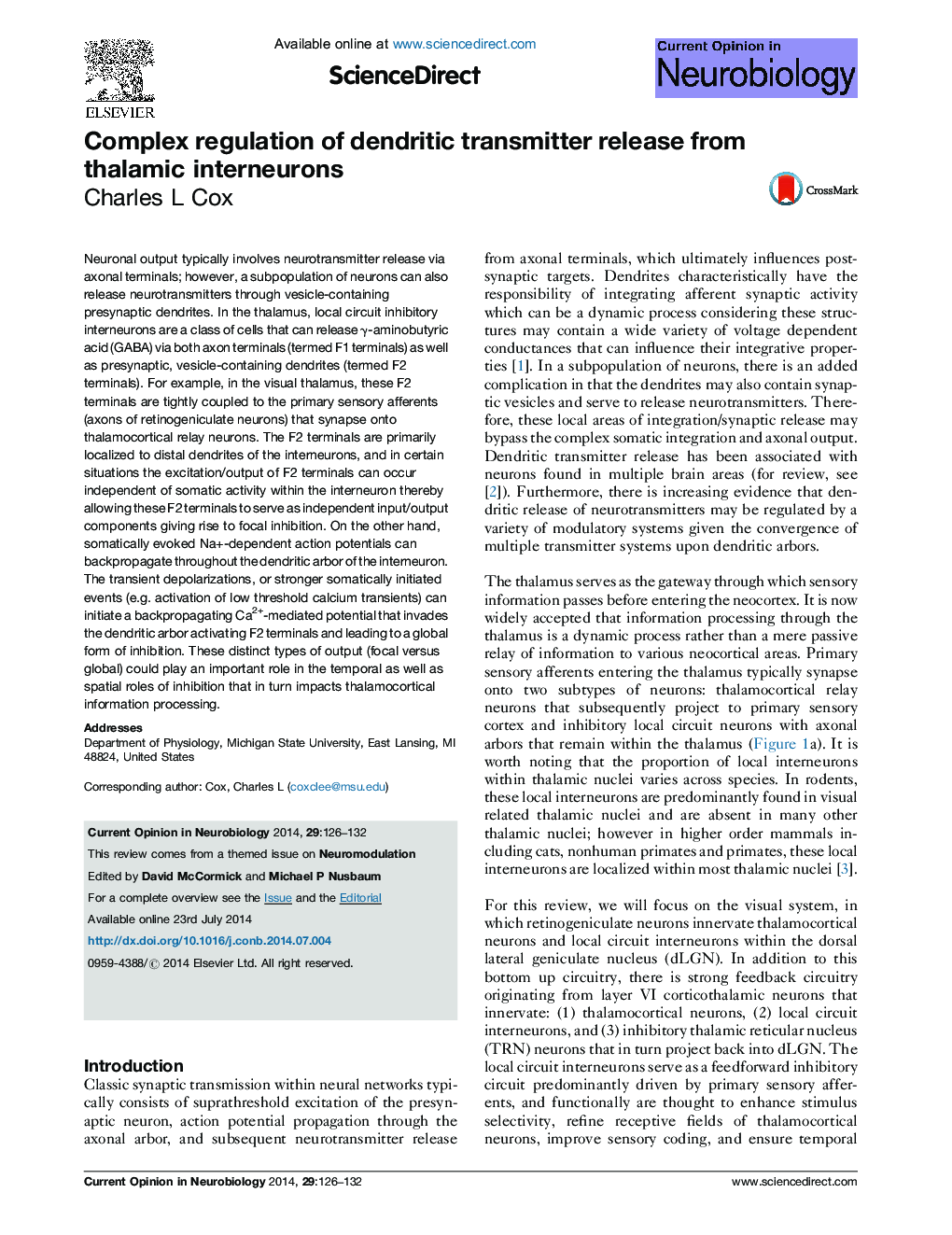| Article ID | Journal | Published Year | Pages | File Type |
|---|---|---|---|---|
| 4334204 | Current Opinion in Neurobiology | 2014 | 7 Pages |
•dLGN interneurons release neurotransmitters via axonal outputs as well as presynaptic dendrites.•Neurotransmitter release from presynaptic dendrites is regulated by multiple neuromodulators.•Local activation of presynaptic dendrites can occur independent of somatic activity.•Backpropagating activity into dendritic arbor can provide synchronous release throughout arbor.
Neuronal output typically involves neurotransmitter release via axonal terminals; however, a subpopulation of neurons can also release neurotransmitters through vesicle-containing presynaptic dendrites. In the thalamus, local circuit inhibitory interneurons are a class of cells that can release γ-aminobutyric acid (GABA) via both axon terminals (termed F1 terminals) as well as presynaptic, vesicle-containing dendrites (termed F2 terminals). For example, in the visual thalamus, these F2 terminals are tightly coupled to the primary sensory afferents (axons of retinogeniculate neurons) that synapse onto thalamocortical relay neurons. The F2 terminals are primarily localized to distal dendrites of the interneurons, and in certain situations the excitation/output of F2 terminals can occur independent of somatic activity within the interneuron thereby allowing these F2 terminals to serve as independent input/output components giving rise to focal inhibition. On the other hand, somatically evoked Na+-dependent action potentials can backpropagate throughout the dendritic arbor of the interneuron. The transient depolarizations, or stronger somatically initiated events (e.g. activation of low threshold calcium transients) can initiate a backpropagating Ca2+-mediated potential that invades the dendritic arbor activating F2 terminals and leading to a global form of inhibition. These distinct types of output (focal versus global) could play an important role in the temporal as well as spatial roles of inhibition that in turn impacts thalamocortical information processing.
